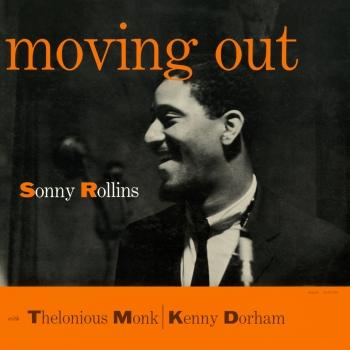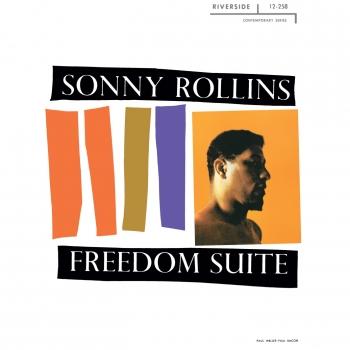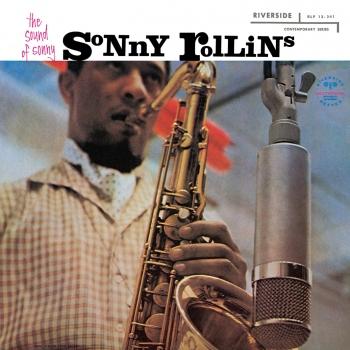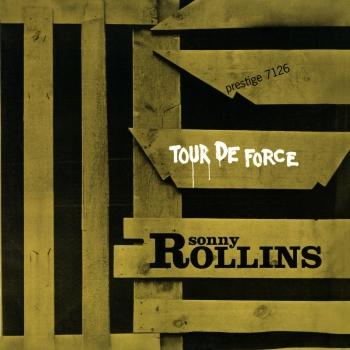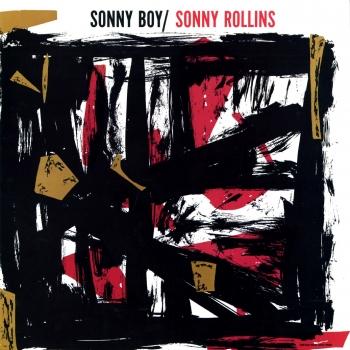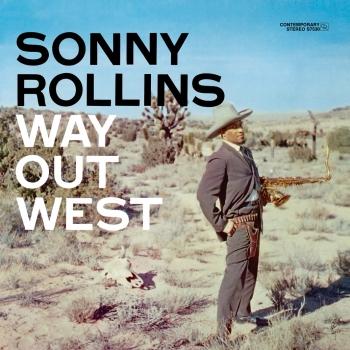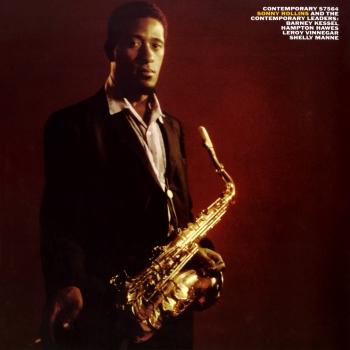
Saxophone Colossus Sonny Rollins
Album info
Album-Release:
1956
HRA-Release:
27.05.2014
Album including Album cover Booklet (PDF)
I`m sorry!
Dear HIGHRESAUDIO Visitor,
due to territorial constraints and also different releases dates in each country you currently can`t purchase this album. We are updating our release dates twice a week. So, please feel free to check from time-to-time, if the album is available for your country.
We suggest, that you bookmark the album and use our Short List function.
Thank you for your understanding and patience.
Yours sincerely, HIGHRESAUDIO
- 1 St. Thomas 06:49
- 2 You Don't Know What Love Is 06:31
- 3 Strode Rode 05:17
- 4 Moritat (Mack The Knife) 10:05
- 5 Blue 7 11:17
Info for Saxophone Colossus
The year 1956 marked a turning point for Sonny Rollins. Out of the ashes of what had been a talented but troubled young tenor saxophonist, came a new Sonny Rollins, his purpose clarified and strengthened, his muse razor sharp and brimming with new visions. As a new member of the Clifford Brown/Max Roach Organization, he was inspired as much by their spiritual consistency as their artistic integrity. By his own admission, even as a jazz tadpole, Sonny Rollins possessed a brawny sound and a powerful rhythmic drive...but other elements were missing.
With „Saxophone Colossus“, Sonny Rollins created a personal vision of the tenor saxophone and modern jazz brimming over with joy and conviction. „Saxophone Colossus“ was a breakthrough recording, praised for its lyrical power, thematic logic, relentless swing and spontaneous invention. Borrowing a page from his West Indian roots, Rollins' 'St. Thomas' employed elements of Caribbean folk melodies and calypso rhythms to create an exotic, dancing tenor anthem--one of the most identifiable, beloved themes in all of jazz--driven along by Max Roach's melodic drumming, Tommy Flannagan's shimmering accompaniment, and the saxophonist's swaggering melodic invention. Rollins displayed fresh harmonic power and innovative methods of thematic development throughout „Saxophone Colossus“.
'The title is not hyperbole....Important as some of his later work has been, the tenor saxophonist's levels of thematic development, assurance, humor and general creative force in „Saxophone Colossus“ remain unequaled....this is an essential album.' (JazzTimes)
Sonny Rollins, tenor saxophone
Doug Watkins, upright bass
Tommy Flanagan, piano
Max Roach, drums
Recorded at the Van Gelder Studio, Hackensack, New Jersey on June 22, 1956
Produced by Bob Weinstock
Engineered by Rudy Van Gelder
Digitally remastered
Sonny Rollins
will go down in history as not only the single most enduring tenor saxophonist of the bebop and hard bop era, but also the greatest contemporary jazz saxophonist of them all. His fluid and harmonically innovative ideas, effortless manner, and easily identifiable and accessible sound have influenced generations of performers, but have also fueled the notion that mainstream jazz music can be widely enjoyed, recognized, and proliferated. Born Theodore Walter Rollins in New York City on September 7, 1930, he had an older brother who played violin. At age nine he took up piano lessons but discontinued them, took up the alto saxophone in high school, and switched to tenor after high school, doing local engagements. In 1948 he recorded with vocalist Babs Gonzales, then Bud Powell and Fats Navarro, and his first composition, "Audubon," was recorded by J.J. Johnson. Soon thereafter, Rollins made the rounds quickly with groups led by Art Blakey, Tadd Dameron, Chicago drummer Ike Day, and Miles Davis in 1951, followed by his own recordings with Kenny Drew, Kenny Dorham, and Thelonious Monk.
In 1956 Rollins made his biggest move, joining the famous ensemble of Max Roach and Clifford Brown, then formed his own legendary pianoless trio with bassist Wilbur Ware or Donald Bailey and drummer Elvin Jones or Pete La Roca in 1957, doing recorded sessions at the Village Vanguard. Awards came from Down Beat and Playboy magazines, and recordings were done mainly for the Prestige and Riverside labels, but also for Verve, Blue Note, Columbia, and Contemporary Records, all coinciding with the steadily rising star of Rollins. Pivotal albums such as Tenor Madness (with John Coltrane), Saxophone Colossus (with longstanding partner Tommy Flanagan), and Way Out West (with Ray Brown and Shelly Manne), and collaborations with the Modern Jazz Quartet, Clark Terry, and Sonny Clark firmly established Rollins as a bona fide superstar. He also acquired the nickname "Newk" for his facial resemblance to Brooklyn/Los Angeles Dodgers pitcher Don Newcombe.
But between 1959 and 1961 he sought a less superficial, more spiritual path to the rat race society of the times, visiting Japan and India, studying yoga and Zen. He left the music business until 1962, when he returned with the groundbreaking and in many ways revolutionary recording The Bridge with guitarist Jim Hall for the RCA Victor/Bluebird label. Rollins struck up a working relationship with trumpeter Don Cherry; did a handful of innovative LPs for the RCA Victor, MGM/Metro Jazz, and Impulse! labels; did one record with his hero Coleman Hawkins; and left the scene again in 1968. By 1971 he came back with a renewed sense of vigor and pride, and put out a string of successful records for the Milestone label that bridged the gap between the contemporary and fusion jazz of the time, the most memorable being his live date from the 1974 Montreux Jazz Festival, The Cutting Edge. Merging jazz with calypso, light funk, and post-bop, the career of Rollins not only was revived, but thrived from then onward. He was a member of the touring Milestone Jazz Stars in 1978 with McCoy Tyner and Ron Carter, and gained momentum as a touring headliner and festival showstopper.
His finest Milestone recordings of the second half of his career include Easy Living, Don't Stop the Carnival, G-Man, Old Flames, Plus Three, Global Warming, This Is What I Do, and Without a Song: The 9/11 Concert. He has worked extensively with road and recording bands that have included such artists as electric bass guitarist Bob Cranshaw; trombonist Clifton Anderson; pianists Tommy Flanagan and Stephen Scott; keyboardist Mark Soskin; guitarists Bobby Broom and Jerome Harris; percussionist Kimati Dinizulu; and drummers Jack DeJohnette, Perry Wilson, Steve Jordan, and Al Foster. Rollins formed his own record label, Doxy, through which he issued the CD Sonny, Please in 2006. Well into his eighth decade of life, Rollins continued to perform worldwide. As a composer, he will always be known for three memorable melodies that have become standards and well-recognized tunes in the jazz canon -- "Oleo," "Airegin," and especially "St. Thomas." (Michael G. Nastos). Source: Blue Note Records.
Booklet for Saxophone Colossus


















